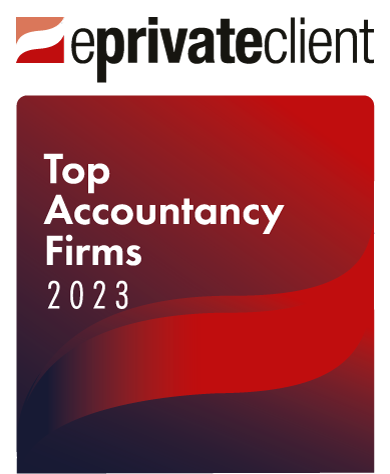As you may know the landscape for personal tax planning has changed significantly since the introduction of the General Anti Avoidance Rule earlier this year. As a result we are seeing renewed interest in the tax reliefs available for certain qualifying investments. Earlier this month at the CBI Conference David Cameron said “We’ve introduced the EIS scheme that people tell me is now probably the most generous tax break for people starting up new businesses, anywhere in the world.”
For many years the government have been keen to support investment into a range of new businesses, andthe Enterprise Investment Scheme (EIS) allows an investor in a qualifying business to obtain 30% income tax relief on the gross investment made as well as further income tax relief in the event that the investment fails such that an investor’s downside is typically limited to 38.5% of the funds invested.
The relatively new Seed EIS (SEIS) provides even greater upfront income tax relief of 50% and increased downside protection to 27.5% of funds invested (via the additional income tax relief), although this relief only applies for investments in smaller businesses (share capital of less than £200k). If you have rolled over capital gains into an SEIS investment, the downside is limited further to 13.75% of the investment, through the application of capital gain tax exemptions.
As touched on above, EIS investment carries a degree of investment risk and therefore you will need to look very closely at a specific EIS investment before deciding whether it is appropriate for you. The range of investments available are significant so there are likely to be business opportunities in an area that you are familiar and Independent Financial Advisers are also on hand to assist further. From a tax certainty perspective, each EIS investment has generally been through an advance assurance process with HMRC to ensure that investors will be entitled to relief on their investments provided the business is carried on as described to HMRC at the outset.
The options for planning are almost endless but it is interesting to see how powerful the EIS reliefs are when applied on a rolling investment programme where the total funds invested are capped over a four year period.
The following examples illustrate how these government backed reliefs could be used to fund children’s school fees, your pension planning and a tax free retirement. EIS funds need to be invested for a minimum of three years, hence why a four year programme is used in these illustrations.
Worked Example 1 – School fees planning with EIS
School fees planning is regularly on our clients minds, but arguably anyone with a regular annual cost may wish to keep reading this section. If you are in the fortunate position of having sufficient funds you may have considered how much you would need to put to one side to generate sufficient income to meet the school fees, or alternatively how much you’d need to simply cover them over the years that follow.
If you estimate that you will need approx £25k per annum to cover the costs of school fees, you could choose to invest £85,000 each year in a portfolio of (or single) EIS investments over four years such that your annual EIS income tax relief provides you with £25,500 in annual income tax refunds. In year 4, you are able to redeem your investment(s) made in year 1 without adverse tax consequences as any gains are also tax free. These funds can then be invested in year 5 to generate more EIS relief, and so on with the proceeds from the investment(s) made in year 2.
In theory you could apply this approach every year throughout your child’s education, meaning that at any one time you don’t need any more than £340k invested in EIS qualifying investment(s) to generate an annual tax free return of 7.5% or the equivalent of 13.6% for a taxpayer on a 45% marginal rate, irrespective of income and growth actually generated by the investments themselves.
At the end of your child’s education you would simply redeem the EIS portfolio, thus your taxes have been used to fund your child’s education in full.
Worked Example 2 - Pension planning with EIS
If you have yet to plan for your retirement or feel it now requires attention, you may be interested in this strategy. Again it relies on a rolling EIS investment programme as described above may be helpful, although in this example we will work on the basis that you are seeking to invest £70k in to a portfolio (or single) EIS investment each year over a rolling 4 year period, i.e. no more than £280k invested in the EIS portfolio. The resulting annual EIS relief of £21K is then placed into your pension which in turn attracts additional relief, result in a gross pension contribution of approximately £38K. Over a 20 year period your pension fund should grow to £764K based on the contributions and tax relief alone (i.e. ignoring any income or growth). You should still have your £280k EIS portfolio that could either be redeemed or held. Investments in EIS qualifying companies are exempt for inheritance tax if held for more than 2 years.
Worked Example 3 – Tax Free Retirement with EIS
We will take an example where you are close to your retirement age and expect to have a pension fund of £1.2m on your 65th birthday, and also qualify for the state pension (presently £5,587 p.a.). We will assume that you decide to take your 25% tax free lump sum of £300K and draw down the balance at a rate of approx £60k p.a. Including the state pension this will generate taxable income of £56K p.a. (based on current rates and allowances). Your net income would be £49K , i.e. you will suffer an effective 24% rate ofincome tax.
If you decide to invest £53K in an EIS investment in year one (using your tax free lump sum) and the same each year thereafter on a rolling four year programme your annual tax liability would be reduced to nil, and therefore your net income is increased to £66K. You should also have a rolling four year EIS portfolio of £214K (assuming no growth). Should some investments show potential for significant growth you may decide to hold these longer with the aim of keeping this value outside of your estate for inheritance tax purposes.
This approach would ensure that you retire and enjoy your full pension tax free.
If this has piqued your interest in EIS and you wish to discuss any of this further please don’t hesitate to contact us.
When considering making a tax efficient investment it is important that you take advice from an Independent Financial Adviser, please let us know if you would like us to recommend one.





